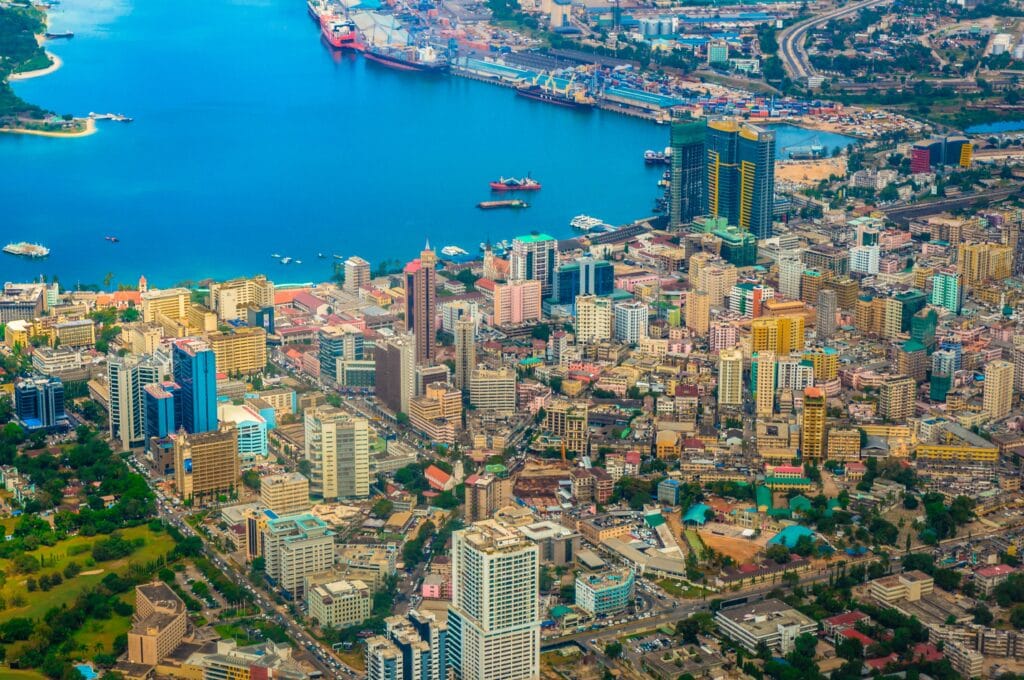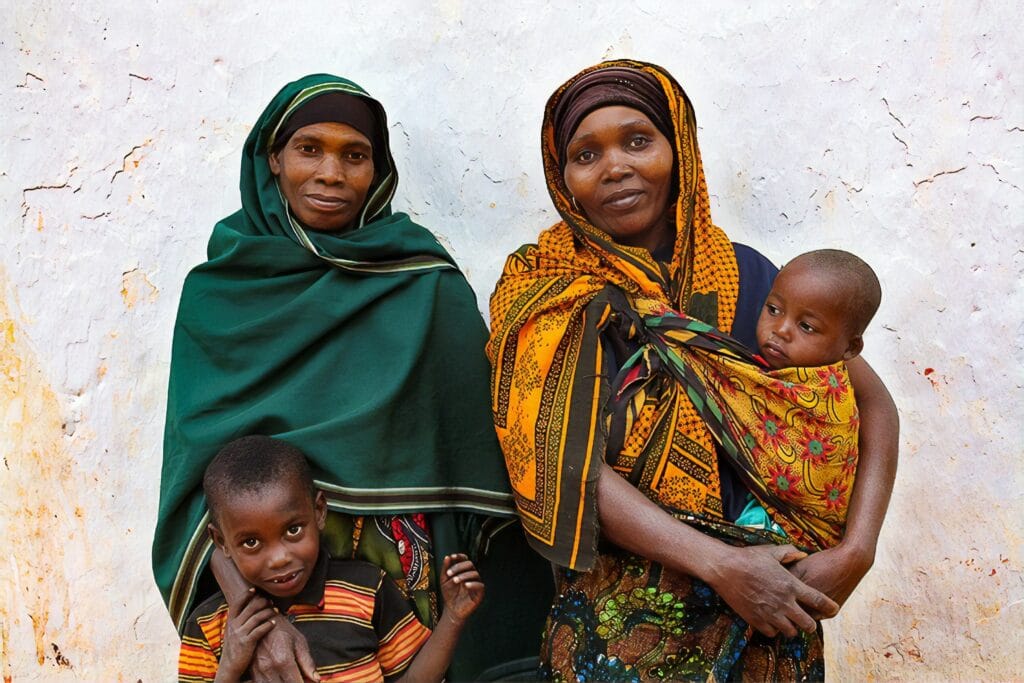Last updated on March 8th, 2024 at 04:58 pm

Known for the Serengeti National Park, Mount Kilimanjaro, and an incredible blend of cultures, Tanzania is a beautiful place to visit or call home. Knowing about Tanzanian money gives interesting insights into this East African country’s history and culture. It’s also plenty useful for traveling to Tanzania or sending money there from abroad.
Our team at Remitly created this guide to the official currency of Tanzania to help you prepare for a trip or to send funds to your loved ones in the country.
About the Tanzania shilling
Tanzania, or more officially, The United Republic of Tanzania, uses the Tanzanian shilling as their form of currency.
The Tanzanian shilling, coded as TZS, is issued by the Central Bank of Tanzania, or the Benki Kuu Ya Tanzania, as it is referred to in Swahili.
One Tanzanian shilling can be divided into 100 senti.
Tanzanian shilling denominations
The Tanzanian shilling comes in both banknotes and coins in the following denominations:
Banknotes
- 500
- 1,000
- 2,000
- 5,000
- 10,000
Coins
- 50
- 100
- 200
- 500
History of the Tanzanian shilling
The Tanzanian shilling is a fairly modern currency. In 1966, the Tanzanian shilling replaced the East African shilling after Tanganyika and Zanzibar united. Their union took place after both territories gained independence from Britain to form the Tanzania we know today.
The first Tanzanian coins were produced in the same year and showcased Julius Kambarage Nyerere, the first president of the newly formed nation.
Before 1966, you would also see the following currencies used in Tanzania:
- The Zanzibari ryal (used until 1908)
- The East African rupee (used from 1906 until 1921)
- The East African florin (used only in 1921)
- The Zanzibari rupee (used from 1908 until 1936)
- The East African shilling (used from 1921 until 1966)

5 essential facts about Tanzania’s currency
Learning more about the shillings in Tanzania can give you insight into its practicality, culture, history, and economy.
1. Writing TZS amounts
The Tanzanian shilling is written out uniquely, compared to how denominations for currency are written in other countries. You write out TZS amounts in this format: x/y. The x represents the number of shillings, and the y represents the number of senti.
As an example, if you wanted to express 50 TZS and 40 senti, it would be written out like this: 50/40.
2. Imagery on the Tanzanian shilling
Tanzanian shillings are brightly colored and are representative of their country.
The lower currency amounts display important historical political leaders, and the higher amounts display animals native to Tanzania.
- 500 TZS- Abeid Amani Karume
- 1000 TZS- Julius Kambarage Nyerere
- 2,000 TZS- a lion
- 5,000 TZS- a rhinoceros
- 10,000 TZS- an elephant
The banknotes described above are a part of the newest series that came out in 2011.
3. Differences in materials
Another interesting aspect to take note of is the variety of materials that the coins are made of:
- Five senti coins: bronze
- Twenty senti coins: nickel-brass
- One shilling coins: cupro-nickel or nickel-plated steel, depending on when they were minted
These are all considered non-precious metals. Although these are the standard, Tanzania does produce gold and silver commemorative coins.
4. Alternatives to the shilling in Tanzania
The Tanzanian shilling is the official currency of The United Republic of Tanzania. However, other currencies are widely accepted there. These currencies include the United States dollar and the euro. Many tourists from America and Europe do not necessarily need to exchange their money, which can sometimes be expensive and tricky.
5. TZS Depreciation
At the time of this writing, the Tanzanian shilling is depreciating. The depreciation of currency refers to money losing its value. The TZS is a floating currency, meaning it has a floating exchange rate with a value that depends on supply, market, and demand.
The Tanzanian shilling is depreciating due to a decline in international commodity prices for agricultural goods coming from Tanzania.

Understanding Tanzanian Currency Exchange Rates
Check the current exchange rate whenever you need to exchange US dollars or other currencies for Tanzanian shillings. The exchange rate tells you how much one currency is worth in terms of another.
For example, say the exchange rate for US dollars to Tanzanian shillings is 1 USD = 2,443.48 TZS, and you want to trade in a 100-dollar bill for shillings. The equation would be:
100 (US dollar amount) x 2,443.48 (exchange rate) = 244,348 (value in Tanzanian shillings)
With this transaction, you’d receive 244,348 shillings less any fees charged by the currency exchange service.
Keep in mind that exchange rates can vary from day to day and even hour by hour and that exchange services may offer varying rates. By shopping around, you can get the best prices when exchanging US dollars, euros, or other currencies into Tanzanian currency.
FAQs about exchanging and using the currency in Tanzania
Still have questions about exchanging and using the currency in Tanzania? Check out our answers to these FAQs for more information.
Can you use credit cards in Tanzania?
Credit and debit cards are widely accepted in Tanzania tourist areas, but only Visa and MasterCard. Carrying cash is still the easiest way to ensure payment in rural areas, where you’re less likely to find businesses that take debit and credit cards.
Remember that when you use your credit or debit card abroad, your credit issuer or bank may assess international usage fees.
Are there fees or restrictions for using your credit cards in Tanzania?
Even where credit cards are accepted, there may be restrictions. Some businesses will only accept credit and debit cards for purchases over a certain amount. It’s also common for businesses to add a 5 to 7.5% fee for bills paid via credit card.
Can you withdraw money from ATMs in Tanzania?
If you visit Tanzania, you will have access to 24-hour ATMs, but you could find them out of banknotes or out of service. Should you use your ATM card to withdraw schillings, both the Tanzanian bank and your financial institution may charge you fees.
You may also be able to take a cash advance from your credit card at an ATM. Credit card issuers usually assess fees for advances and may charge you a different interest rate for them, so contact yours ahead of time to find out what you can expect to pay.
Where is the best place to exchange currencies in Tanzania?
Banks and hotels are generally the best places to change the U.S. dollar or another foreign currency. While there are exchange service counters at airports, you’ll typically pay more fees and get a poorer rate when you use them.
There are street vendors who will offer to change the currency for you. However, many of these individuals work on the black market, and using their services is illegal in Tanzania. To protect yourself, stick to exchange desks in financial institutions and hotels.
Can you use traveler’s checks in Tanzania?
Most places exchanging currency for Tanzanian shillings will accept traveler’s checks. Some major safari providers will also accept them as forms of payment.
Sending money to Tanzania
If you need to transfer funds to someone in Tanzania, you have two main options:
- Banks: Most banks offer wire transfer services that let you send funds from your bank account to someone else’s. Since you already have funds on deposit, this is a convenient option, but the exchange rates and fees will be less favorable.
- Money transfer services: Apps and websites like Remitly have less overhead than brick-and-mortar financial institutions, so they tend to charge lower fees and offer better rates. They also give you more ways to pay for transfers and your recipients more ways to obtain their funds, such as picking up cash in person.
Whether you wish to initiate a transfer in the U.S. dollar, the euro, or another currency, research current rates and fees to ensure you get the best deal.
